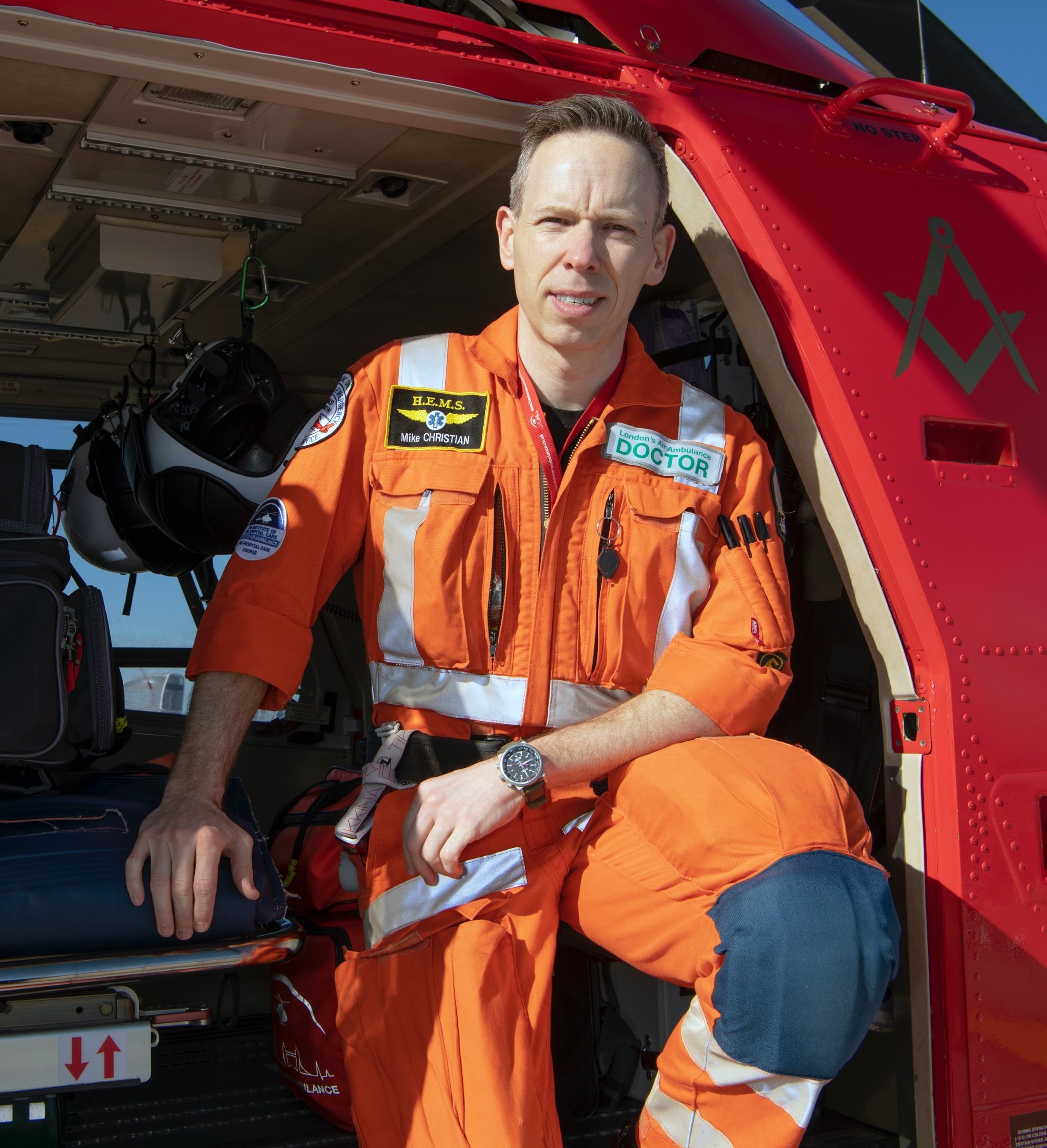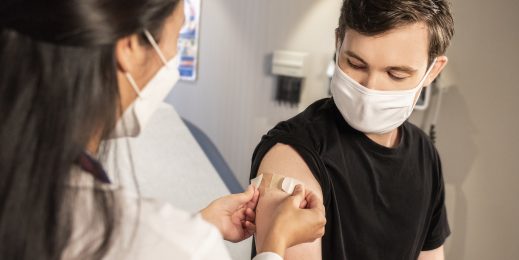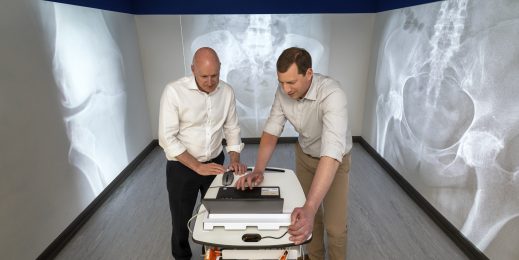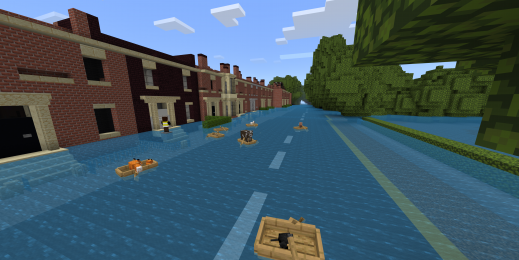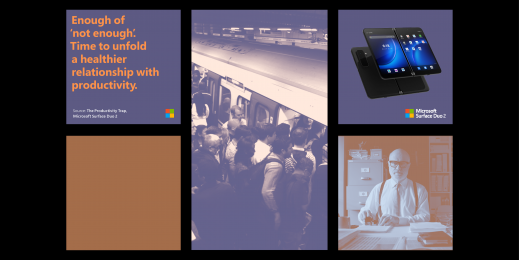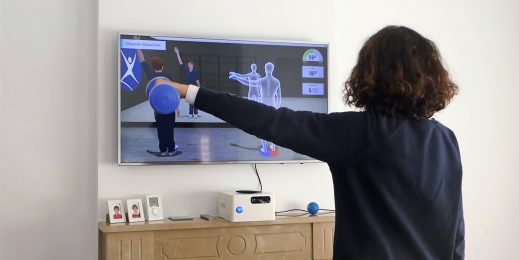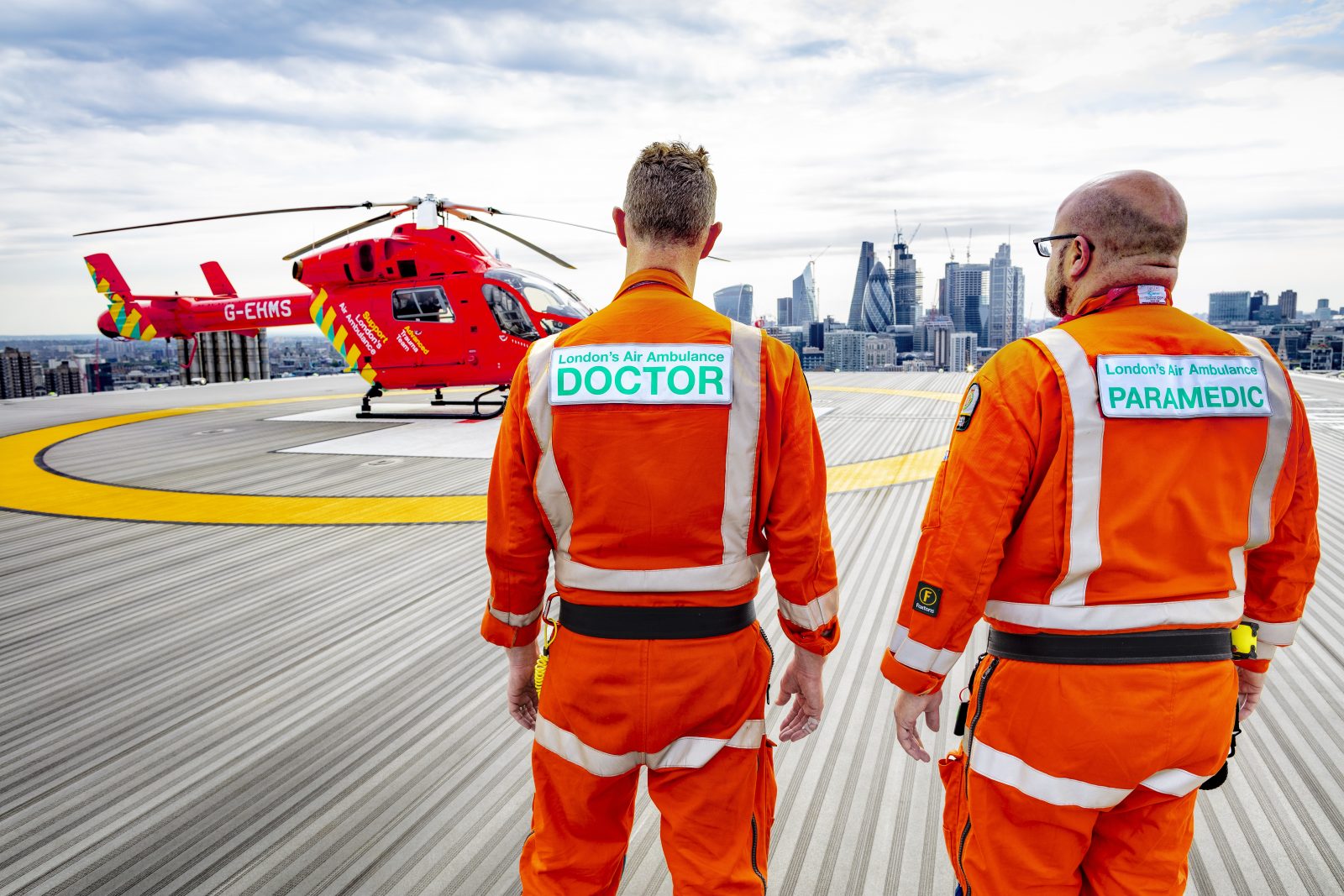
Every second counts
London’s Air Ambulance Charity has built its own app that saves time – and helps its medics save lives
Medics at London’s Air Ambulance Charity only deal in life and death situations. Their helicopter and rapid response cars take an advanced trauma team to patients in the capital needing emergency medical treatment and who are unlikely to survive the journey to hospital. London’s Air Ambulance brings the hospital to the scene to deliver urgent medical care when every second counts.
The life-saving charity looks after the 10 million people who live, work and travel within the M25, treating an average of five patients every day. The most common incidents include serious road traffic collisions, stabbings, shootings, falls from height, industrial accidents, assaults and incidents on the rail network. The service has attended most major incidents in London including 7/7 and the London Bridge terror attacks.
London’s Air Ambulance has a world-class reputation for delivering clinical innovation and pioneering treatment at the roadside and is known for using new technology and treatments to bring the most innovative care to the people of London.
When an emergency call comes in, the medics must be ready to go – and so must their equipment. The helicopter takes off within three minutes of the klaxon sounding on the helipad, so everything the team needs, from bandages and syringes to ventilators and defibrillators, has to be pre-packed in a bag and safely stored, so it can be picked up and carried onto the helicopter, or one of the charity’s response cars if the call comes in at night (the helicopters are only allowed to fly between dawn and dusk).
This equipment enables the medics to perform life-saving medical interventions, including open chest surgery to repair heart wounds, blood transfusion and anaesthesia, at the scene.
Until recently, London’s Air Ambulance teams used paper and pens to create checklists of the equipment that had to be placed into each medical bag, and whiteboards to assign those bags to vehicles. The charity needed to find a digital solution that ensured checklists could be created and shared from mobile phones and tablets, giving all medics one view of their operation, wherever they were, at any time of day or night.
Microsoft Power Apps came to the rescue.
“We face a number of challenges in our work, certainly on the clinical side, taking care of patients and providing care at the roadside to critically injured patients is one challenge,” said Mike Christian, Doctor and Research & Clinical Effectiveness Lead with London’s Air Ambulance and Barts Health NHS Trust. “But on a day-to-day basis we also face challenges on the helipad as we strive to be a highly reliable organisation.
“We have a number of checklists, which ensure we’re meticulous in all of our preparations for taking care of patients. In the past, this has been all done manually, which has led to a lot of duplication and effort. Today, we’re using the full Microsoft Office suite, including Power Apps to create those checklists. It’s a much better system that’s very easy to use.”
The London’s Air Ambulance Charity’s offices in East London are just a 20-minute walk from The Royal London Hospital. The hospital is home to the busiest trauma centre in the UK, and it’s common to see one of the charity’s two red, MD902 Explorer Twin Engine helicopters take off from the roof of the building and fly off to an emergency. Located 284 feet above the streets of London, the helipad is one of the highest in Europe and sits at almost the same height as Big Ben.
The helicopters – nicknamed Rowan and Walter – can fly at speeds of up to 160mph at up to 1,000 feet. London’s Air Ambulance average flight time is just seven-and-a-half minutes, during which the team have priority over all other air traffic if they’re on an emergency medical call. On board is a pilot and co-pilot who helps to navigate, an advanced trauma doctor, paramedic and consultant.
London’s Air Ambulance operates in partnership with Barts Health NHS Trust and the London Ambulance Service. Barts Health NHS Trust employs and pays the doctors and the London Ambulance Service provide paid paramedics who are seconded to the service. An advanced trauma paramedic also operates from the Service’s control room and is responsible for dispatching London’s Air Ambulance to the most critically injured people in London.
Once at the scene, the pilot needs approximately 80 sq ft of clear space to land – about the size of a small tennis court. That’s when medics like Mike spring into action.
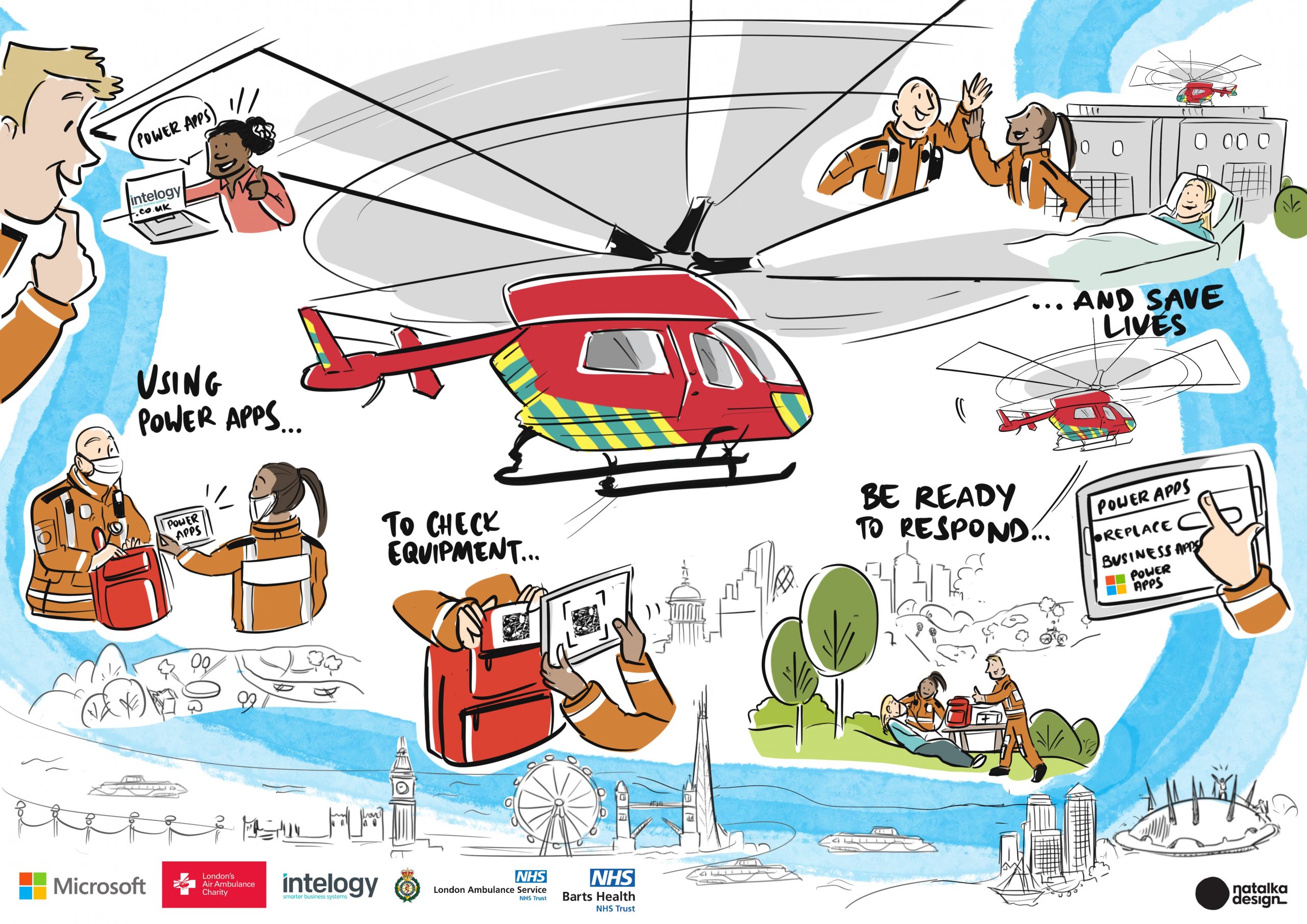
“We get called out to stabbings and terrorist incidents,” Mike says. “We see the not so pretty side of life in a big city, which is unfortunate. We get to the scene so fast that sometimes the incident is still going on as we’re trying to help people.
“We carry all the kit that is required to care for a critically injured trauma patient, plus helmets and stab vests to keep us safe as we work. Everything we have in the Emergency Department or an Intensive Care Unit fits in various packs that we carry with us. We carry eight different packs on a helicopter, so in total we have upwards of 80 pieces of equipment.”
London’s Air Ambulance’s advanced trauma team will stabilise the patient at scene, delivering cutting-edge care and procedures usually found in the Emergency Department. The team will then accompany the patient in a land ambulance to the nearest major trauma centre. If required, the patient will be flown to The Royal London Hospital.
Upon arrival, fire officers from London’s Air Ambulance will help move the patient onto a trolley and escort them down to the lifts. London’s Air Ambulance have priority access to the lift to get straight from the 17th floor down to the Emergency Department, where specialist teams there can take over. As soon as a patient is handed over to The Royal London team, the medics will return to the helipad, ready for the next job.
The bags and the helicopter are then restocked. In 2012, London’s Air Ambulance became the first air ambulance in the UK to carry emergency blood supplies, allowing transfusions to be administered at the scene of an incident. A specialised cooler bag can carry four units of the O-negative blood type, which can be stored in the aircraft for up to 72 hours.
The bags and the helicopter are then restocked.
Mike adds: “It’s a very rigorous process. Everything is tracked, so we know what’s been completed and what still needs to be done. We do those checks every day, from the drugs we carry, to making sure the kits are available, to making sure the fridge temperature is just right. Those are all set out in the regulations we have to follow.”
Using pen, paper and whiteboards to keep track of all that equipment wasn’t working for a team that prides itself on speed, agility and accuracy. London’s Air Ambulance needed a digital solution, so they called Intelogy, a Microsoft gold partner that specialises in helping organisations embrace digital ways of working.
In addition to using Power Apps to build a suite of checklist apps to replace the existing paper-based processes, Intelogy came up with the idea of attaching QR codes to every medical bag. Once the code is scanned by a mobile device, the user can log all the equipment in the identified bag before it’s ready to go out again.
That information can also be easily shared with other charity staff or the helipad team, who can support the medics by ordering new equipment for them.
Simon Chalfont, Technical Director at Intelogy, helped London’s Air Ambulance build the Power Apps solution and, like everything else the medical team does, speed ended up being a key part of the process.
“Because of how easy Power Apps is to use, the development speed was phenomenal,” he says. “The QR code idea was suggested during a Friday meeting, we had a proof of concept by the middle of the following week and it was fully implemented the week after. That process would normally have taken weeks, or sometimes months. Power Apps fundamentally changes the way we think about digital transformation at organisations and how quickly the spark of an idea can be turned into reality.”
One great thing about Power Apps is that because they are “low-code” solutions, they are easy to build and can solve specific problems that organisations are experiencing.
Mike says that his medical team had no initial training or experience in Power Apps before this solution was created.
“I’m not a techie guy,” he says, laughing. “So when we embarked upon the digital transformation project at London’s Air Ambulance, we made a decision to use Microsoft’s Power Platform because there’s no need for bespoke development and we would have a product that we could maintain ourselves in the future.”
Now, just a few months later, London’s Air Ambulance is building its own Power Apps, as well as utilising Power Automate, which tells a system to automatically perform a task – notify selected medics when a medical bag has been filled, for example – and Power BI for data visualisation and reporting.
That’s removing manual processes and duplication. Previously, tasks were recorded in multiple places, which wastes time and can cause confusion among medics who want to restock bags or prepare them for the helicopter or car. Now, they all have one version of the truth, and it’s in their hands, anywhere they go, at any time.
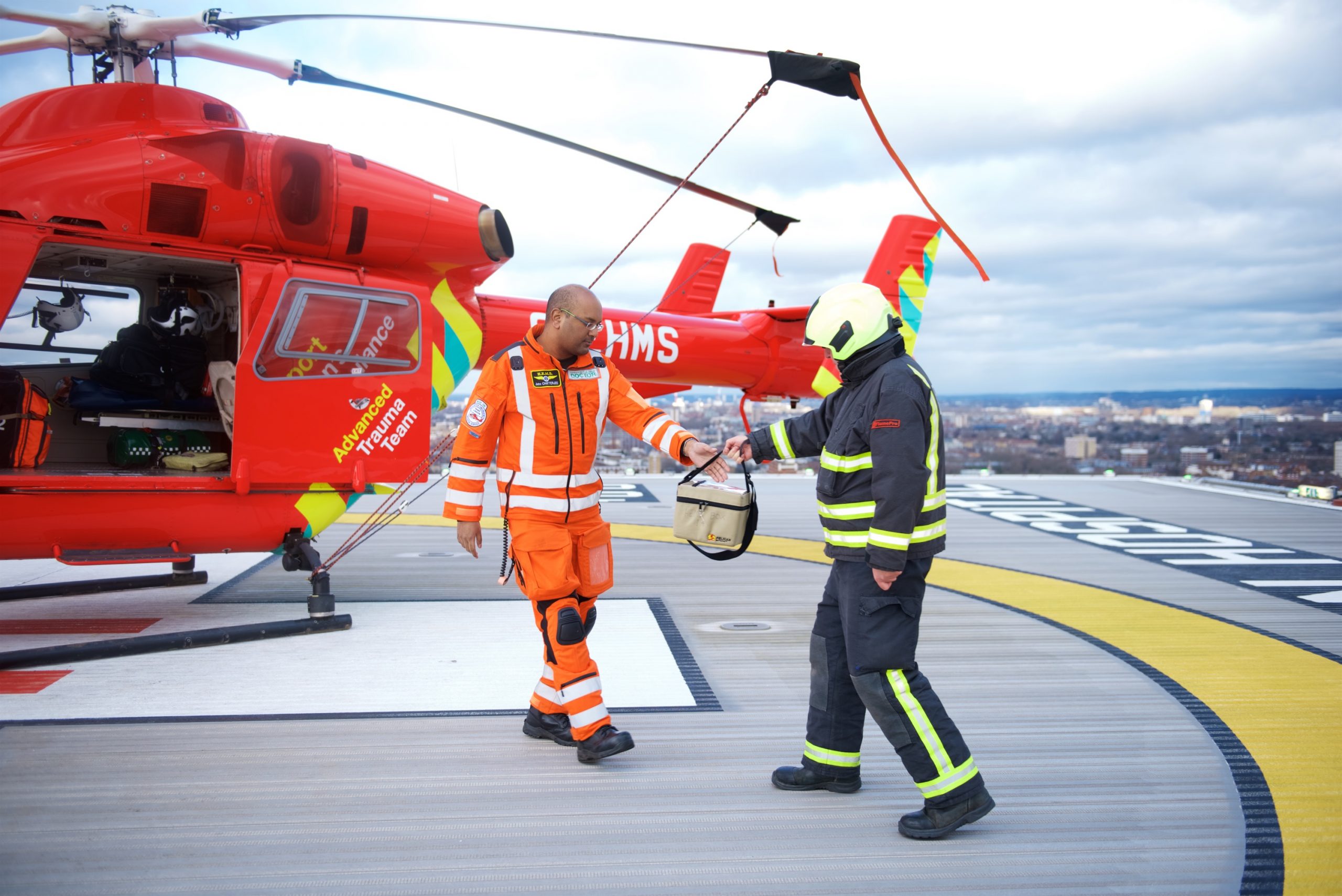
“When taking care of critically injured patients, we often talk about a concept called ‘situational awareness’,” Mike adds. “That’s the big picture of knowing what’s happening around you and your team. That applies during an emergency, but it also applies to our equipment, too. Knowing what equipment is in what location at any time is essential for us to run our operation.”
It’s an important digital step for a charity that has constantly looked for ways to improve its response to medical emergencies and save lives since its inception in 1989. London’s Air Ambulance was the first charity in the UK to send a senior doctor and a paramedic on its helicopters, which cut the death rate in severe trauma by 30% to 40%.
In 2014, its medics performed the world’s first pre-hospital Resuscitative Endovascular Balloon Occlusion of the Aorta (REBOA). This pioneering balloon surgery is used at the roadside to control severe pelvic bleeding, an injury most associated with cycling incidents and falls from height, and has helped to save numerous lives in the capital.
The charity’s new app has been such a success that teams at The Royal London Hospital and staff at other air ambulance services have asked Mike about its development and how it’s being used.
Mike and his team want to develop the app further and capture more data that can help them save lives.
“When it comes to the potential of what this technology can do for us, the sky’s the limit,” he says.





